What is On-Page SEO and Why is it Important?
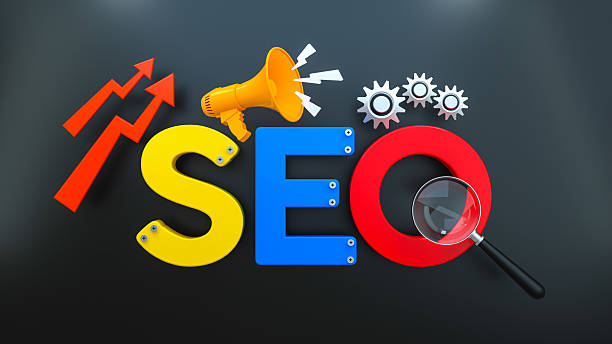
On-Page SEO, also known as internal SEO, refers to the set of actions you take within your website to improve its ranking in search engines.
These actions include optimizing content, site structure, HTML tags, and other related factors.
The importance of on-page SEO lies in the fact that it helps search engines better understand your site’s content, consequently displaying your site in higher rankings.
In fact, on-page SEO is the foundation of a successful SEO strategy.
Imagine your website is a house.
Off-page SEO is like advertising and public relations that direct people to your house, but on-page SEO is like interior design and furniture arrangement that determine the visitors’ experience.
If your house is not beautiful and functional, guests will flee, even if your advertising is excellent.
Similarly, if your website’s on-page SEO is weak, you won’t be able to achieve good rankings even with the best off-page SEO strategies.
The use of appropriate #keywords is also of particular importance.
With on-page SEO, you show search engines what your site is about and what value it offers to users.
This causes search engines to display your site to more relevant users, thereby attracting more targeted traffic to your site.
On-page SEO is a very important part of website optimization for search engines.
On-page SEO is a significant aspect of #content_marketing.
On-page SEO plays a crucial role in enhancing #user_experience.
Did you know that your company’s website is the first point of contact for 75% of potential customers?
Your website is the face of your brand. With **RasaWeb**’s corporate website design services, build an online presence that earns customer trust.
✅ Create a professional and lasting image for your brand
✅ Attract target customers and boost online credibility
⚡ Get free consultation from **RasaWeb** experts!
Keyword Research; The First Step in On-Page SEO
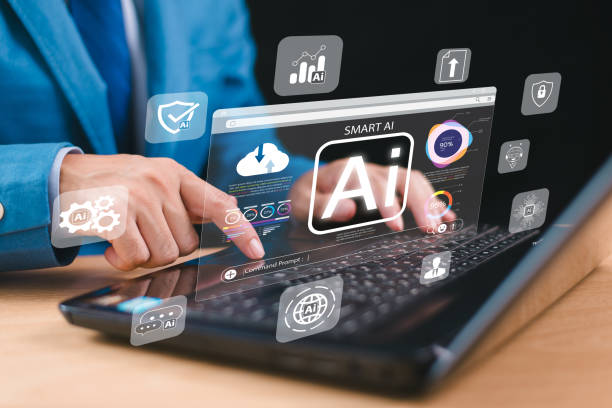
Keyword research is the process of finding words that users employ to search for information on search engines.
These words should be relevant to your site’s content and have an appropriate search volume.
Choosing the right keywords helps you optimize your content for user needs and attract more targeted traffic to your site.
Selecting appropriate keywords helps you get seen in search engines.
To perform keyword research, you can use various tools such as Ahrefs, Moz Keyword Explorer, Ubersuggest, and Google Keyword Planner.
These tools provide information such as search volume, competition level, and related keywords.
When choosing keywords, pay attention to these points:
- Keywords must be relevant to your site’s content.
- Keywords should have an appropriate search volume (not too high and not too low).
- Keywords should have a reasonable level of competition.
- Use long-tail keywords.
After selecting keywords, use them in page titles, meta descriptions, H tags, the main content body, and image file names.
On-page SEO, by using appropriate keywords, helps improve your site’s ranking.
Optimizing Page Title (Title Tag) and Meta Description
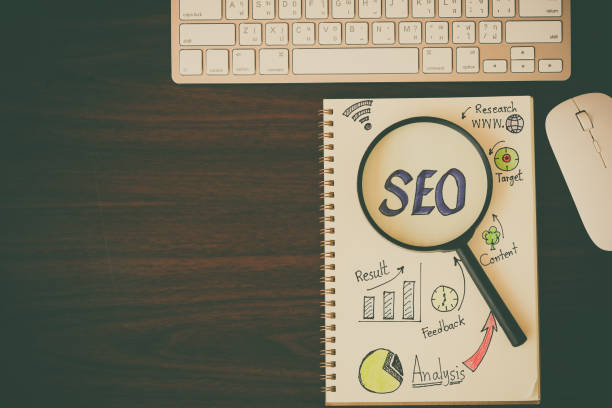
The page title and meta description are two important elements in on-page SEO that are displayed in search results.
The page title is the main title of your page that appears at the top of the browser and in search results.
The meta description is a summary of your page’s content that is displayed below the page title in search results.
These two elements are an opportunity to attract users and encourage them to click on your link.
To optimize your page title and meta description, pay attention to these points:
- The page title should be attractive, relevant, and include the main keyword.
- The page title should not be too long (maximum 60 characters).
- The meta description should be concise, appealing, and include the main keyword.
- The meta description should not be too long (maximum 160 characters).
- Use engaging and persuasive keywords.
- Write a unique meta description for each page.
The title and meta description are the first things users see in search results.
So, try to optimize them as best as possible to increase your site’s click-through rate (CTR).
Optimizing the page title can have a significant impact on SEO.
| Element | Description | Best Practice |
|---|---|---|
| Page Title (Title Tag) | The main title of the page displayed in search results. | Short, attractive, and containing the main keyword |
| Meta Description | A summary of the page’s content displayed in search results. | Short, attractive, and containing the main keyword |
Optimizing URL Structure
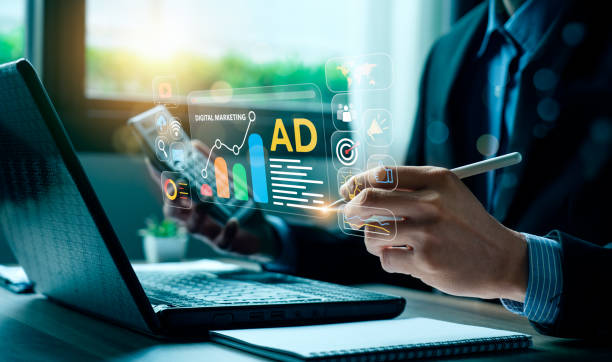
URL structure is the address of your site’s pages displayed in the browser’s address bar.
A good URL structure helps search engines better understand your site’s hierarchy and find your pages more easily.
Furthermore, a proper URL structure also helps users understand which page they are on your site.
Optimizing URL structure is very impactful in on-page SEO.
To optimize your URL structure, pay attention to these points:
- Use short and descriptive URLs.
- Use keywords in the URL.
- Use hyphens (-) instead of underscores (_) in the URL.
- Use lowercase letters in the URL.
- Use appropriate categorization for your pages.
For example, the following URL is an optimized URL:
www.example.com/blog/seo-internal
This URL is short, descriptive, includes the main keyword (on-page SEO), and uses hyphens instead of spaces.
Creating a suitable URL structure can help improve your site’s SEO.
A proper URL structure can enhance user experience.
One of the factors of on-page SEO is a suitable URL structure.
Does your current website build the trust that potential customers should have in your business? If the answer is no, it’s time to have a professional and impactful corporate website with RasaWeb.
✅ Fully custom design tailored to your brand identity
✅ Increased lead generation and business credibility in the eyes of customers⚡ Contact us for a free consultation!
Content Optimization Using H1 to H6 Tags
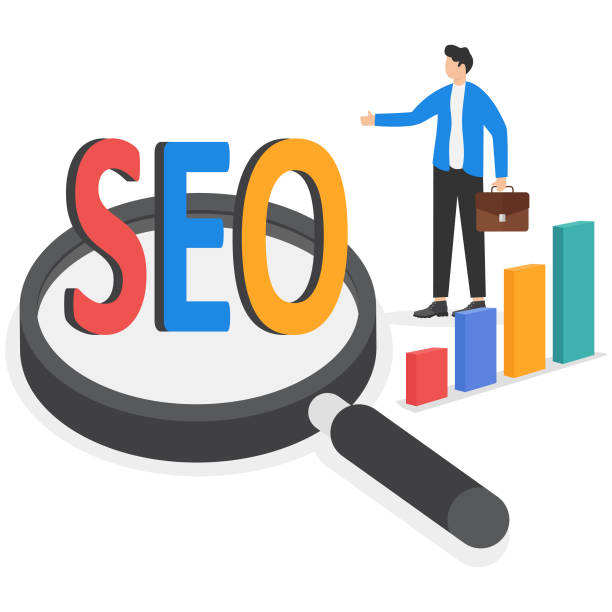
H1 to H6 tags are HTML tags used for content headings.
The H1 tag is the main title of the page and should include the primary keyword.
H2 to H6 tags are used for subheadings of content and should have a hierarchical structure.
Correct use of H tags helps search engines better understand your content structure and recognize the importance of each section.
To optimize content using H1 to H6 tags, pay attention to these points:
- Use one H1 tag per page.
- The H1 tag should include the main keyword.
- Use H2 to H6 tags hierarchically.
- Use relevant keywords in H2 to H6 tags.
- Write H tags clearly and engagingly.
Proper use of H tags helps improve content readability and increases your site’s ranking in search results.
H tags play an important role in website on-page SEO.
The hierarchical structure of H tags helps improve on-page SEO.
Optimizing #title_tags is one of the most important parts of SEO.
Image Optimization

Images play an important role in attracting users and engaging them with your site.
However, unoptimized images can slow down site loading speed and reduce your site’s ranking in search results.
Image optimization includes reducing image file size, using the appropriate format, adding alternative text (Alt Text), and proper naming of image files.
To optimize images, pay attention to these points:
- Reduce image file size.
- Use the appropriate format for images (JPEG for photos, PNG for graphic images).
- Add alternative text (Alt Text) for images.
- Use keywords in the alt text.
- Name image files descriptively.
Image optimization increases site loading speed, improves user experience, and boosts your site’s ranking in search results.
On-page image SEO is as important as text.
Image optimization can enhance user experience.
Website Loading Speed Optimization
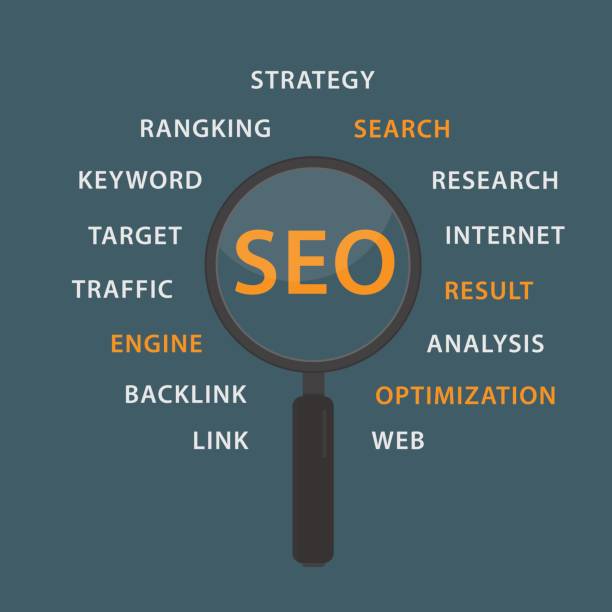
Website loading speed is one of the important factors in site ranking in search results.
Users expect your site pages to load within a few seconds.
If your site’s loading speed is slow, users will abandon your site, and your site’s ranking in search results will decrease.
Increasing site loading speed has a significant impact on on-page SEO.
To optimize website loading speed, you can use the following methods:
- Use a high-quality hosting service.
- Optimize images.
- Use a CDN (Content Delivery Network).
- Compress HTML, CSS, and JavaScript codes.
- Use caching.
- Use speed optimization plugins.
Optimizing website loading speed improves user experience, increases your site’s ranking in search results, and boosts conversion rates.
Site speed is one of the important #ranking factors.
| Factor | Impact on Speed | Optimization Solution |
|---|---|---|
| Image Size | Reduces speed | Compression and use of appropriate format |
| Codes (HTML, CSS, JavaScript) | Reduces speed | Compression and reduction of code size |
| Hosting | Reduces speed | Choosing quality and high-speed hosting |
Internal Linking
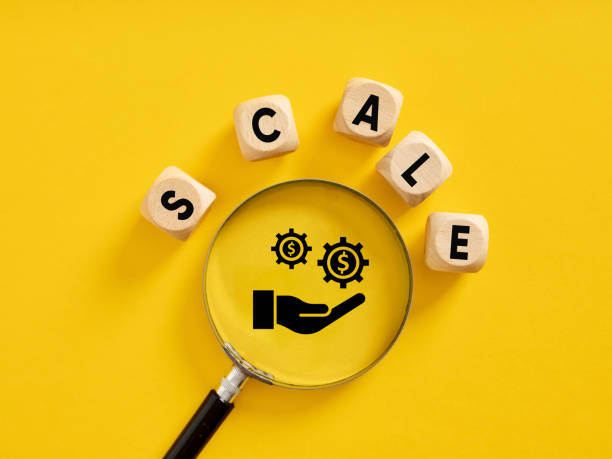
Internal linking is the process of creating links between different pages of your site.
Internal linking helps search engines better understand your site’s structure and find important pages on your site.
Additionally, internal linking also helps users easily navigate your site and find the information they need.
Internal linking is one of the important aspects of on-page SEO.
For internal linking, pay attention to these points:
- Use keywords in anchor text.
- Link to important pages on your site.
- Place links within the content text.
- Create links naturally.
Internal linking improves site structure, increases the ranking of important site pages, and enhances user experience.
Proper use of internal links greatly assists on-page SEO.
Internal linking plays a crucial role in a #content_driven strategy.
Did you know that 94% of a first impression of a company is related to its website design?
RasaWeb, by offering professional corporate website design services, helps you create the best first impression.
✅ Create a professional and trustworthy image for your brand
✅ Easier attraction of potential customers and improved online standing
⚡ Get free corporate website design consultation
Mobile Optimization

Today, more than half of web traffic comes from mobile devices.
Therefore, optimizing a site for mobile is a necessity.
Mobile-friendly sites are easily viewable and usable on mobile devices and provide a better user experience.
Search engines also display mobile-friendly sites in higher rankings.
On-page SEO for mobile has gained increasing importance.
To optimize your site for mobile, you can use the following methods:
- Use responsive design.
- Optimize site loading speed for mobile.
- Use readable fonts and appropriate sizes.
- Make buttons and links large enough.
- Use concise and useful content.
Mobile optimization improves user experience, increases your site’s ranking in search results, and boosts conversion rates.
On-page SEO should be performed with mobile in mind.
Continuous On-Page SEO and Results Tracking
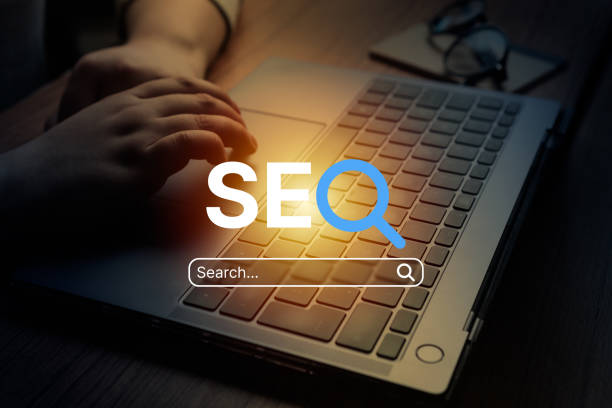
On-page SEO is an ongoing process and should not be done once and then abandoned.
Search engines continuously update their algorithms, and your site must adapt to these changes.
Furthermore, you should regularly track your on-page SEO results and make necessary adjustments if needed.
On-page SEO requires continuous effort and monitoring.
To track on-page SEO results, you can use various tools such as Google Search Console and Google Analytics.
These tools provide information such as keyword rankings, site traffic, click-through rate, and conversion rate.
By tracking on-page SEO results, you can identify your site’s strengths and weaknesses and improve your SEO strategy.
On-page SEO is a #continuous_optimization process.
Optimizing website on-page SEO improves your site’s ranking.
On-page SEO is the core for being seen in the online world.
By focusing on improving internal site factors, you can rank more effectively in search results and attract targeted traffic.
On-page SEO is a process that helps improve a site’s ranking in Google.
On-page SEO is constantly changing and evolving.
On-page SEO is an integral part of a digital marketing strategy.
On-page SEO is the foundation of success in the online world.
On-page SEO is the key to increasing organic traffic.
Optimizing on-page SEO boosts site credibility.
With on-page SEO, desired search results can be achieved.
On-page SEO requires knowledge and experience.
Frequently Asked Questions
| Question | Answer |
|---|---|
| What is Meta Title and why is it important in on-page SEO? | The meta title is the most important on-page SEO element displayed at the top of the browser tab and in search results. This title helps search engines and users understand the main topic of the page and should include the primary keyword. |
| What role does Meta Description play in on-page SEO? | The meta description is a short summary of the page’s content displayed below the title in search results. Although it does not directly affect ranking, its attractiveness can increase the click-through rate (CTR). |
| How should keywords be used in page content? | Keywords should be used naturally and relevantly in strategic locations such as the title, headings, first paragraph, and body text. Avoid excessive keyword stuffing. |
| What is the importance of high-quality and comprehensive content in on-page SEO? | High-quality, unique, informative, and comprehensive content that addresses user needs is of great importance. Search engines give higher rankings to content that provides real value. |
| What is the purpose of heading tags (H1-H6) in on-page SEO structure? | Heading tags (H1, H2, H3, etc.) are used to structure content and indicate the importance of different sections. H1 is the main title of the page, and each page should have only one H1. Other tags are used for subheadings. |
| How do we optimize images to improve on-page SEO? | To optimize images, use descriptive alternative text (Alt Text) that includes relevant keywords, reduce the image file size without sacrificing quality, and use meaningful and relevant file names. |
| What are the characteristics of a friendly URL for on-page SEO? | A friendly URL should be short, readable, descriptive, include main keywords, and be free of extra characters. The URL structure should be hierarchical and logical to be understandable for both users and search engines. |
| How does Internal Linking help with on-page SEO? | Internal linking, by connecting related pages, helps users and search engine crawlers better understand the site structure, transfers page authority, and increases user dwell time on the site. |
| What is the impact of page loading speed on on-page SEO? | High loading speed is crucial for both user experience and SEO ranking. Slower pages may be ignored by search engines and lead to an increased bounce rate. |
| Why is Mobile-Friendliness highly important in on-page SEO? | Given the increasing number of searches via mobile devices, having a responsive and mobile-friendly website is essential for user experience and ranking in search results (Google’s mobile-first indexing). |
And other services of RasaWeb Advertising Agency in the field of advertising
Smart Link Building: Professional optimization for campaign management using attractive UI design.
Smart Digital Branding: Transform online growth with custom programming.
Smart Content Strategy: A creative platform for improving digital branding using real data.
Smart Google Ads: A combination of creativity and technology to boost sales through custom programming.
Smart Custom Software: A professional solution for online growth focusing on marketing automation.
And hundreds of other services in the field of internet advertising, advertising consultation, and organizational solutions
Internet Advertising | Advertising Strategy | Advertorial
Resources
Comprehensive Guide to On-Page SEO on Mizbanfa
Modern SEO Techniques on FarazSEO
Content Strategy for SEO on AloSEO
Professional Internal Link Building on SEORooz
Rasaweb Afarin Digital Marketing Agency, by offering comprehensive and innovative solutions, assists your business on the path to digital success. We are with you every step of the way, from strategy to execution, to ensure a powerful online presence.
Are you looking for a significant transformation in your business? We have the necessary expertise to achieve your goals. With services such as modern UI website design, SEO, social media management, and targeted advertising campaigns, we will increase your website traffic and improve conversion rates.
Let Rasaweb Afarin unleash your business’s full potential in the digital world. For a free consultation and to learn more about our services, contact us today and join our community of successful clients.
📍 Tehran, Mirdamad Street, next to Bank Markazi, Kazerun Jonubi Alley, Ramin Alley, No. 6

